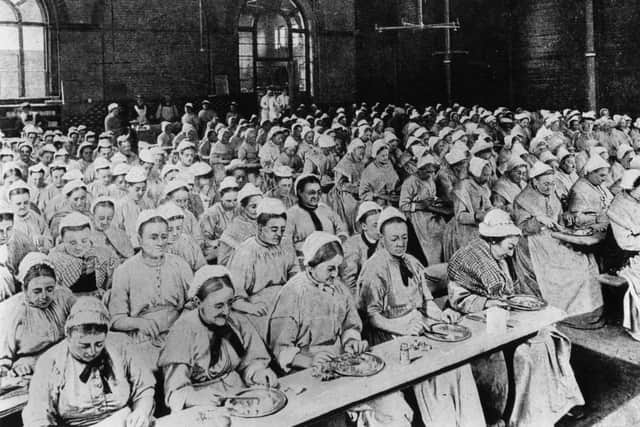Cost of living crisis is forcing many to live in 19th-century workhouse conditions with knock-on effects for their health – Dr Gwenetta Curry
While these improvements are positive signs the nation is moving towards recovery from the economic damage caused by the Covid pandemic, the increasing cost of living has muted these advances. This has seen 62 per cent of households experience higher energy bills this winter and prices are set to rise further.
The rapid increase in heating and fuel costs has forced families to make hard choices to decide what bills are most important. Some families are deciding between heating their homes and buying food for the week.
Advertisement
Hide AdAdvertisement
Hide AdFood is a necessity that has become challenging for more families across the UK in the last year. As a result, many have had to depend on food banks to supply their needs. According to a recent report by Trussell Trust, there was a 22 per cent increase in food bank use in January and February compared to the same period in 2020.
Children and people with disabilities are some of the most vulnerable groups to hunger. Food insecurity is defined as “being unable to afford food and, as a result, having smaller meals than usual or skipping meals; being hungry but not eating because of food costs; or not eating for a whole day”.
Although hunger and food insecurity have long been an issue, the pandemic has exacerbated the conditions for families who are barely making ends meet.
People with disabilities are five times more at risk than people not limited by disabilities (31.1 per cent versus 6.4 per cent).
According to Kamran Mallick, chief executive of Disability Rights UK, “with rising energy bills, increasing inflation and benefits pegged at a horrendously low level, millions of disabled people are living in conditions comparable to the 19th-century workhouse”.


Often at-risk groups are overlooked in the efforts to recover from a crisis and disability is one issue that must not be ignored or forgotten.
Food insecurity can have detrimental effects on the growth and development of children. Researchers have found that household food insecurity is associated with developmental risks and poor maths skills in studies conducted in high-income countries. People on Universal Credit are five times more likely to have experienced food insecurity in the past six months and the number of households with children experiencing food insecurity has risen. Furthermore, access to healthy food options can remain an issue even after people receive assistance.
While the rates of Covid have dropped significantly across the country, we remain aware of the various ways it has and continues to negatively impact health outcomes.
Advertisement
Hide AdAdvertisement
Hide AdIncreased rates of vaccination and medication have significantly reduced the number of severe reactions to the disease. Only 10 per cent of the population in Scotland are unvaccinated and 63 per cent have received their third dose.
The pandemic has had a wide-reaching impact on everyone’s life whether they have had the virus or not. And the economic impact will have a direct link to the health and well-being of the population for years. Hunger and food insecurity will need to remain a priority for the Covid recovery efforts to ensure a healthy quality of life for everyone.
Dr Gwenetta Curry is an Edinburgh University lecturer on race, ethnicity and health
Comments
Want to join the conversation? Please or to comment on this article.

